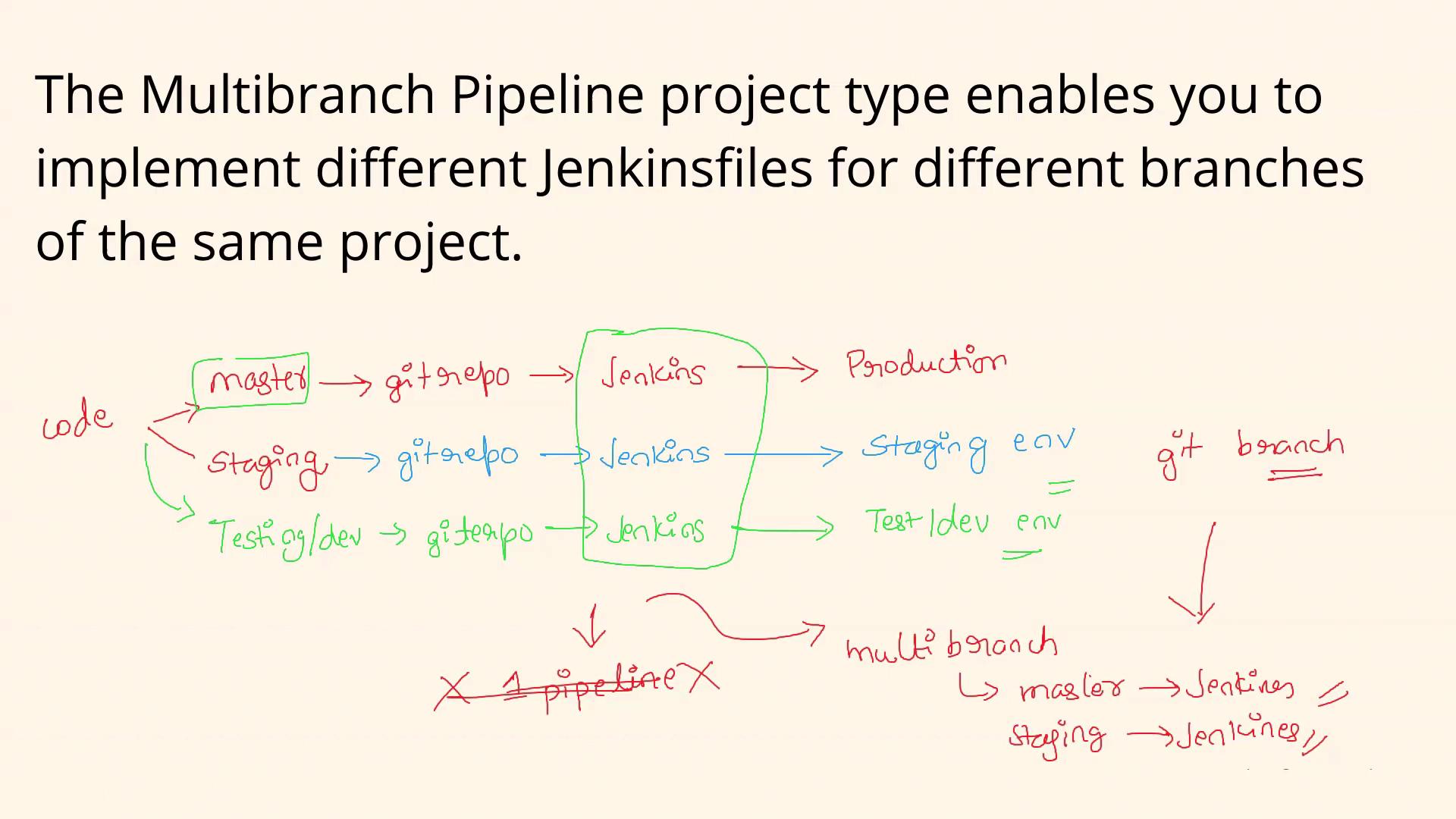DevOps Interview Preparation Course
Jenkins and CICD
Jenkins Question 4
A multi-branch pipeline in Jenkins streamlines the management of pipeline configurations across various branches within your source control repository. Instead of manually creating and maintaining separate Jenkins jobs for every branch (e.g., production, staging, testing, development), a multi-branch pipeline automatically detects branches that contain a Jenkinsfile and creates an individual pipeline for each. This automation ensures that each branch is tailored with its specific deployment or testing settings while reducing manual configuration.
Let’s dive deeper into how this works in practice.
Imagine you have a GitHub repository with a master branch containing a Jenkinsfile that deploys your application to a production server. Deploying every change in production is not always ideal, especially during development. This is where additional branches come into play.
For example, you might create a staging branch with its own Jenkinsfile focused on deploying to a staging environment. Similarly, you may have a testing (or dev) branch with a Jenkinsfile designed for a testing environment. Each branch carries its unique configurations, allowing independent testing of changes before merging into the master branch.
Efficiency in Automation
The Jenkins multi-branch pipeline feature automatically scans your repository, identifies each branch with a Jenkinsfile, and creates a corresponding pipeline job. This capability dramatically reduces the risk of configuration errors and saves you from creating redundant jobs.

This approach is particularly beneficial when you have a well-defined Git branching strategy. It enables specific deployment strategies for different environments without the overhead of manually managing multiple Jenkins jobs.
To summarize, consider the following key points when discussing multi-branch pipelines in Jenkins:
- Multi-branch pipelines automatically create pipeline jobs for every branch that contains a Jenkinsfile.
- This mechanism allows independent and efficient testing and deployment across various environments like testing, staging, and production.
- By utilizing multi-branch pipelines, you save time and reduce errors compared to maintaining separate Jenkins jobs for each branch manually.

Important Note
Ensure that each branch in your repository contains an appropriately configured Jenkinsfile. Without it, the multi-branch pipeline feature will not create the respective pipeline job, potentially disrupting your CI/CD workflow.
Understanding and leveraging multi-branch pipelines is crucial for modern CI/CD practices. This approach allows teams to test code in multiple environments independently and efficiently, making it a valuable concept for technical interviews and real-world projects alike.
That's it for this article. We hope these insights assist you in mastering Jenkins multi-branch pipelines and prepare you well for your upcoming interviews or projects.
Watch Video
Watch video content